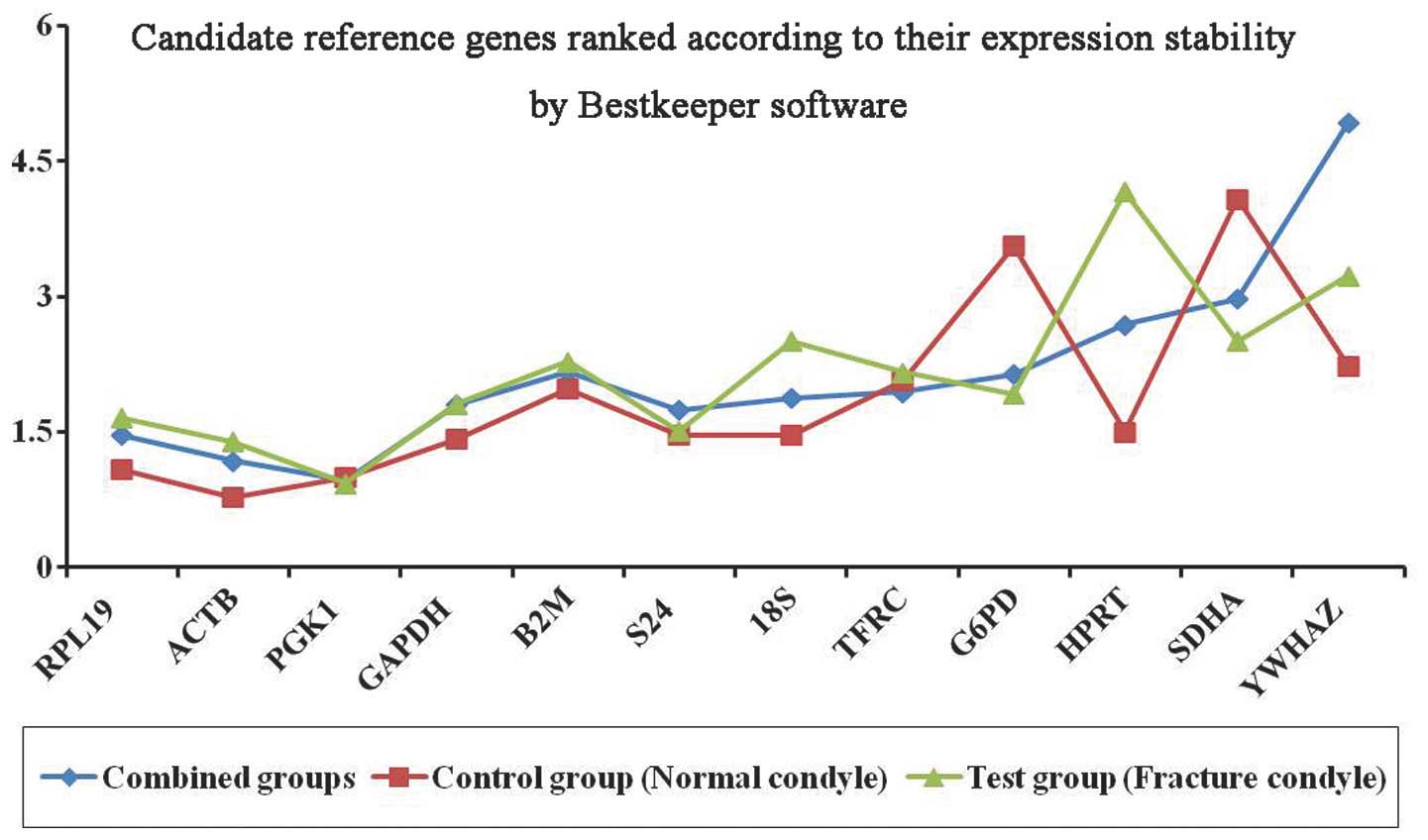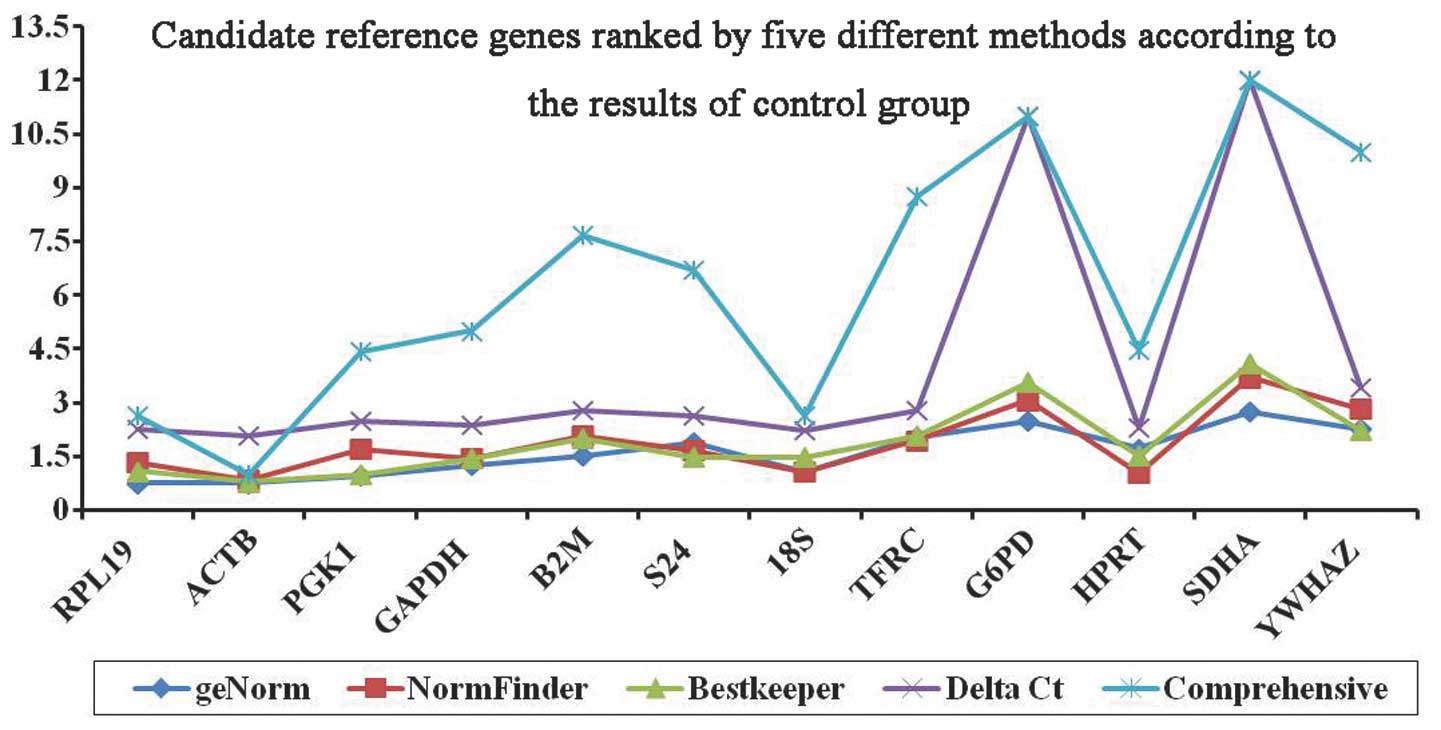Evaluation of reference gene suitability for quantitative expression analysis by quantitative polymerase chain reaction in the mandibular condyle of sheep
- Authors:
- Published online on: July 28, 2015 https://doi.org/10.3892/mmr.2015.4128
- Pages: 5633-5640
-
Copyright: © Jiang et al. This is an open access article distributed under the terms of Creative Commons Attribution License.
Metrics:
Total
Views: 0 (Spandidos Publications: | PMC Statistics:
)
Total PDF Downloads: 0 (Spandidos Publications: | PMC Statistics:
)
Abstract
Reference genes are commonly used as a reliable approach to normalize the results of quantitative polymerase chain reaction (qPCR), and to reduce errors in the relative quantification of gene expression. Suitable reference genes belonging to numerous functional classes have been identified for various types of species and tissue. However, little is currently known regarding the most suitable reference genes for bone, specifically for the sheep mandibular condyle. Sheep are important for the study of human bone diseases, particularly for temporomandibular diseases. The present study aimed to identify a set of reference genes suitable for the normalization of qPCR data from the mandibular condyle of sheep. A total of 12 reference genes belonging to various functional classes were selected, and the expression stability of the reference genes was determined in both the normal and fractured area of the sheep mandibular condyle. RefFinder, which integrates the following currently available computational algorithms: geNorm, NormFinder, BestKeeper, and the comparative ΔCt method, was used to compare and rank the candidate reference genes. The results obtained from the four methods demonstrated a similar trend: RPL19, ACTB, and PGK1 were the most stably expressed reference genes in the sheep mandibular condyle. As determined by RefFinder comprehensive analysis, the results of the present study suggested that RPL19 is the most suitable reference gene for studies associated with the sheep mandibular condyle. In addition, ACTB and PGK1 may be considered suitable alternatives.



















